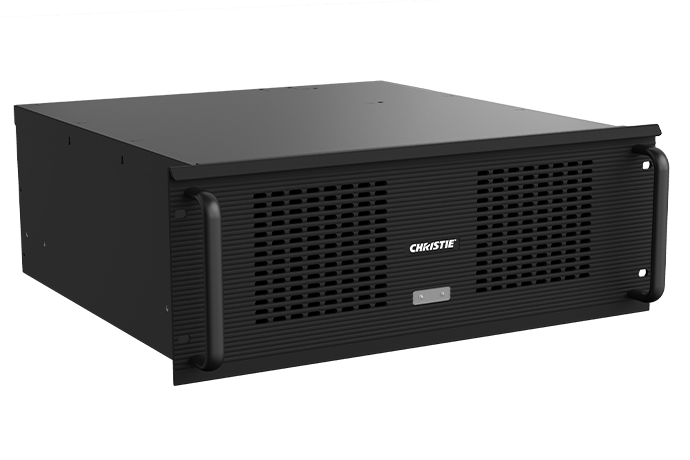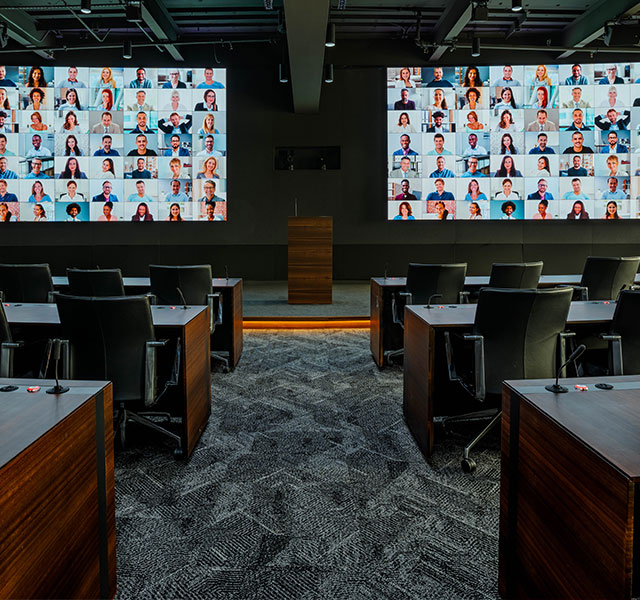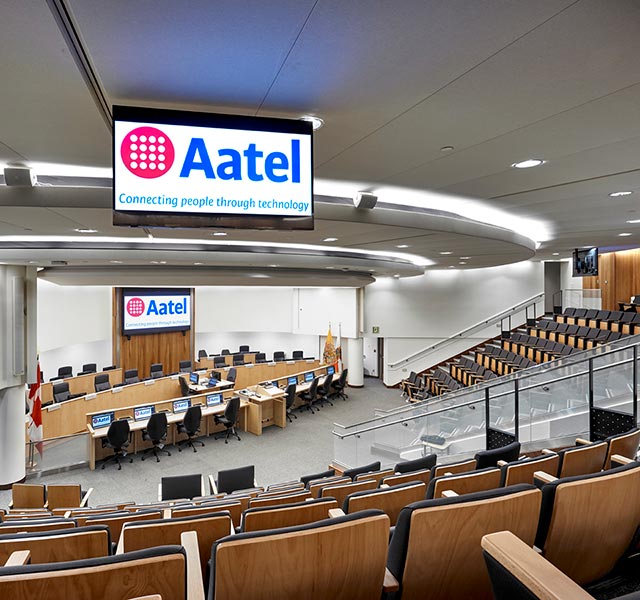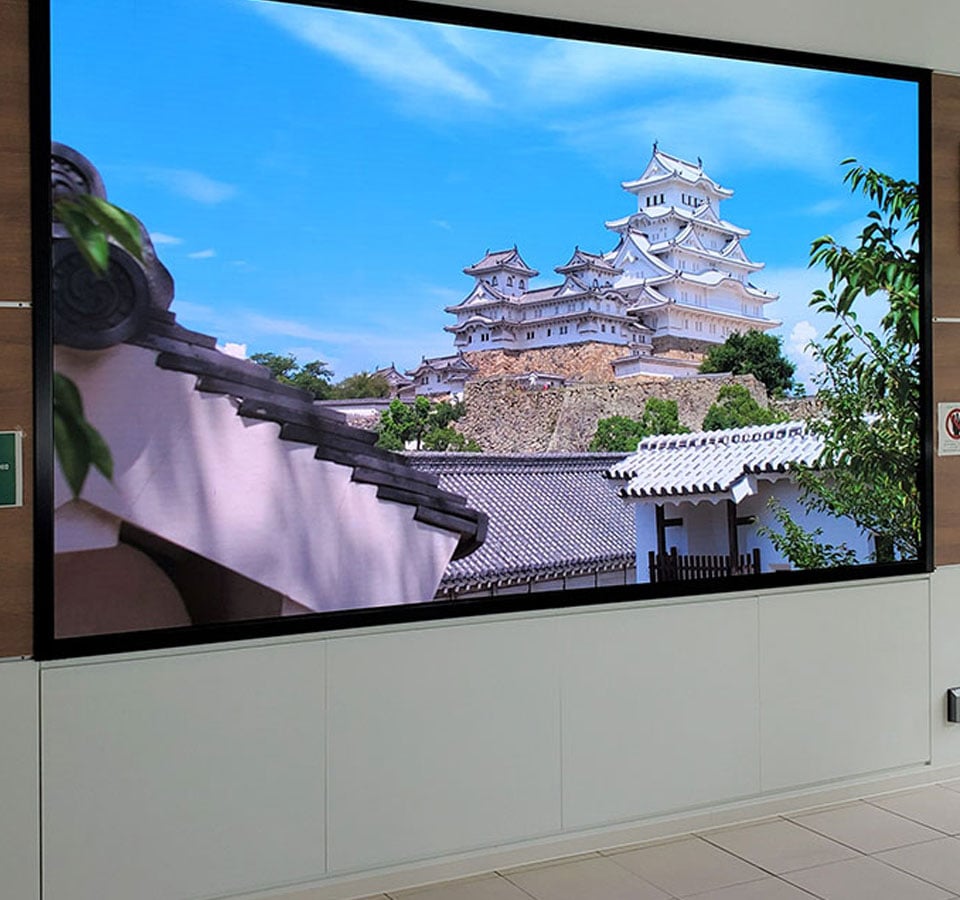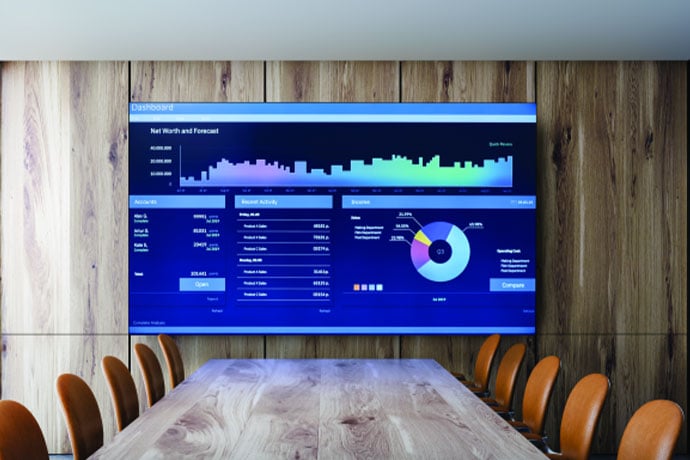
Video walls

At Christie®, we have everything you need to build dynamic and engaging LED video walls, with premium and budget-friendly options and content management solutions to fully customizable services and support from Professional Services.
Discover our video wall solutions:
- LED video walls: From our premium MicroTiles® LED models to our budget-friendly Core Series III LED, we have the technology to fit every application and budget.
- Switchers & distribution: Design and integrate feature-rich Software Defined Video over Ethernet (SDVoE) systems with Christie Terra® and deliver the ultimate quality and performance.
- Content management & image processing: Our advanced content management and image processing technologies make it easy to manage multiple screens and deliver content for even complex applications
- Design collaboration: From simple to complex video wall solutions, we can work with you to design and install even the largest projects.*
- Professional services: We’re the AV industry’s most trusted advisors for supporting commercial AV infrastructure, with industry-leading extended warranties and time-critical support systems.
With TAA-compliant options, we also serve mission-critical control room applications, situation rooms, and large government projects.
Put our video wall solutions to work in a wide range of applications, from retail, hospitality, and education to transportation and a range of commercial applications.
*Design collaboration is available in select regions. Ask your Christie sales representative for more details

Video wall solutions brochure
Download brochure
Questions about your video wall project?
Contact sales
Design your LED video wall
Use the LED designerChristie video walls are popping up around the globe!

Frequently asked questions
What are video walls used for?
Video wall solutions can be used for many applications, including digital signage, lobbies, meeting rooms, control rooms, auditoriums, and simulation and visualization installations.
Video wall displays are also scalable, making them a perfect fit for larger installations.
What are the different types of video wall displays?
There are two major types of video wall displays: LCD and LED. LED video walls use modular LED panels to create a large display area. The high brightness and contrast of LED video walls mean they are often used in indoor or high-ambient-light environments.
LCD video walls use thin bezel LCD displays arranged in a grid to create a seamless image or video display.
LED versus LCD video walls: Which video wall display is best for me?
Determining whether an LED and LCD video wall display is best for you depends on multiple factors. Some things to consider when choosing a video wall are the installation environment and application type, the brightness required, weight, content, power management, and the total cost of investment.
What are the benefits of using a video wall over a single large display?
A video wall offers a larger display area and supports scalable, custom configurations to fit your application.
Video wall solutions also provide more powerful resolutions and are relatively easier to service and maintain. A video wall solution always provides a more enriching viewing experience than single large displays.
How does a video wall work?
A “video wall” is a complete AV solution consisting of multiple individual components. A video wall solution often includes LED display tiles, power controllers, content management and processing solutions, AV distribution systems, and video wall controllers.
The combination of technology required for each video wall is designed based on what your application calls for.
What does a video wall controller do?
A video wall controller is a hardware device that manages and controls a video wall display. The controller is responsible for processing and distributing video signals to the individual displays that make up the video wall solution.
To do this, the video wall controller takes input from various sources, such as cameras, computers, and media players, and distributes the video signal across the video wall in real time. It also enables users to simultaneously display multiple images and videos on a video wall, either as a single image or as a combination of images.
How do I calculate video wall resolution and viewing distance?
Calculating the resolution and viewing distance for your video wall system depends on several factors, including the intended use of the video wall, whether it’s an indoor or outdoor application, available space, environment, and budget.
Our calculator can help you determine the resolution and viewing distance, and design an LED video wall for your space. Check it out:
What is pixel pitch?
Pixel pitch is the distance between the center of two adjacent pixels on an LED display screen. It’s typically measured in millimeters (mm) and represents the density of pixels on the screen. For example, a smaller pixel pitch indicates a higher pixel density, which results in higher resolution and sharper image quality.
Can LED displays be used outdoors?
Christie® LED displays are specifically designed for indoor applications. However, it is possible to create outdoor LED display solutions.
